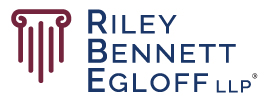7 Tips to Help You Handle Your First Jury Trial
Nearly all of our courts require parties to mediate their case before trial. As a result, most cases settle, but settlement is not guaranteed. Therefore, clients should understand how to present a case at trial so they will be ready when their case goes to trial. Here are some tips for your first jury trial.
1. Work with your attorney to develop your trial themes as early as possible
Most cases can be summarized in a small number of issues or themes that a party needs to prevail on to win at trial. Your presentation of your case at trial will be best if your attorney can succinctly and persuasively advocate your position on those themes. Often, inexperienced attorneys wait to start writing out trial themes until just a few weeks before trial. By that time, all of the depositions have been taken and all of the other evidence has been gathered, and it may be too late to fully develop and support those trial themes.
A better approach is to work with your attorney to thoroughly evaluate your case early on in the litigation and as part of that, to identify trial themes. If possible, that should be done before any depositions are taken and before significant written discovery has been done. That way, your attorney can be more productive with written discovery requests and responses, thoroughly prepare witnesses for depositions on all the relevant issues, and take better depositions of witnesses for the other parties.
2. Understand the Rules of Evidence
All courts have written Rules of Evidence that govern what will and will not be admissible at trial. In many cases, during the discovery process, attorneys obtain information that seems helpful to their position or damaging to the other party’s position, then use that information to evaluate their case. However, the information may not be admissible at trial, so it is essential to understand the applicable Rules of Evidence and how they will govern the admissibility of potential evidence in the case.
Experienced attorneys do not wait until just before trial to consider and debate the admissibility of evidence with opposing counsel. While some attorneys wait to exchange exhibits for trial until just weeks or days before trial as parties are preparing their trial notebooks, if an important document or testimony falls outside what is admissible under the Rules of Evidence, it can be too late to find other evidence that would be admissible and prove the same point. To avoid that, your attorney should take time to review the Rules of Evidence periodically. He or she should also consider the material evidence being developed in your case as the case proceeds and evaluate whether it will be admissible so that if it will not, your attorney can consider what other evidence might prove that point and obtain it before the discovery deadline.
3. Participate in identifying your trial exhibits
Most courts require the parties to meet and confer at least a few days before trial to exchange exhibits, try to reach an agreement on which exhibits will be admissible at trial, and try to resolve any disputes as to admissibility issues. In many cases, given the continued growth of the use of electronic devices, thousands of documents will have been produced in discovery, and hundreds of exhibits may have been marked during depositions. There is often a significant overlap among those documents, and a small subset of those documents can sometimes prove the same points.
The best way to present a case at trial is to support your trial themes using the smallest number of clear (and admissible) exhibits, coupled with credible testimony that the jury can understand and accept. Sometimes, it is necessary to admit hundreds of documents into evidence at trial But other times, the essential points can be made with a much smaller number of exhibits and by focusing the testimony on the issues addressed in those exhibits.
4. Have a trial notebook
For any trial, your attorney should prepare a comprehensive trial notebook that includes tabs with sections, in order, to cover every stage of the trial, including voir dire questions to the jury panel, preliminary jury instructions, opening statements, an outline of the direct exam or cross-exam of each witness expected to be called, and final jury instructions. The only part of the trial presentation that does not always need to be written out in the trial notebook is the final argument, as that will evolve as the case is presented at trial and can be drafted near the end of the trial, based on the opening statement outline.
In preparing witness outlines for trial, it is essential that your attorney include specific cites to any deposition transcripts or exhibits to be referenced during the witness exam. When that is done, witnesses who stray from their prior testimony or from the exhibits in the case can promptly be refreshed (or confronted) with the prior testimony or exhibit and the witness’s testimony can be redirected to where the attorney wants it to go. When an attorney tries to refresh or impeach a witness with a deposition transcript or exhibit but spends time flipping through documents or pages to try to find the correct part of the transcript or exhibit, the point the attorney is trying to make can be lost, and the Judge and jurors can feel their time is being wasted.
When presenting a case to a jury, there are a large number of moving parts, and it is easy to get distracted. Attorneys who have prepared a clear and effective trial notebook can rely on that and usually do a good job presenting their case if they keep it simple and present what they have thoughtfully assembled in advance in their trial notebook.
5. Understand the Jury Rules
Most courts have Jury Rules that cover the basics of jury trials and what jurors do, from the calling of potential jurors for the jury pool through the verdict that is read at the end of a trial. The Rules provide valuable information on how jury trials work.
6. Consider the Judge and jury
Judges and jurors are busier than ever and appreciate it when you and your attorney consider their time and limited exposure to the case. At trials, attorneys who waste that time look bad and may be admonished by the Judge. When that occurs in front of the jury, it does not bode well for the offending attorneys and their case.
Most Judges and jurors are very considerate of the attorneys and the effort it takes to present a case to a jury at trial. Attorneys who properly prepare for trial and make effective use of the Judge’s and jurors’ time are often rewarded with similar courtesies from the Judge and jurors and with favorable verdicts at trial.
7. Try to relax as best you can
Trials are stressful for all the parties and the attorneys involved. Mistakes are sometimes made, but usually, if the attorneys have adequately prepared, assembled a good trial notebook, and cover the best parts of that notebook at trial, they can make an effective presentation at trial.
A client’s active participation at all stages of litigation will assist his or her attorney in the attorney’s presentation for a jury trial. Although no attorney can guarantee the outcome of a jury trial, a client who understands what is involved in taking a case to a jury will be a true asset to his or her attorney.

Author Raymond T. Seach
Ray Seach is an AV-Rated attorney focusing on litigation and transactions involving products, premises, environmental, aviation, shareholders, contracts, financing, and insurance matters. He has significant jury trial experience representing local, regional and national companies. Ray has also litigated appeals to the Indiana Court of Appeals, and has argued before the Seventh Circuit Court of Appeals.
Ray also represents companies and their owners with business formation, shareholder agreements, financing, acquisitions, leasing, franchising, and shareholder disputes. Through his work as a Certified Public Accountant before attending Indiana University School of Law, Ray gained experience with auditing entities and their financial statements, which provides a strong foundation for his work as a litigation and business lawyer.
© Riley Bennett Egloff LLP
Disclaimer: Article is made available for educational purposes only and is not intended as legal advice. If you have questions about any matters in this article, please contact the author directly.
Permissions: You are permitted to reproduce this material itn any format, provided that you do not alter the content in any way and do not charge a fee beyond the cost of reproduction. Please include the following statement on any distributed copy: “By Raymond T. Seach© Riley Bennett Egloff LLP – Indianapolis, Indiana. www.rbelaw.com”
Posted on March, 18 2020 by Raymond T. Seach
